WORK IN PROGRESS he he
Bored, thought I'd post some helpful genetic info for anyone learning colors and genetic reciessive or dominant traits. These are ALL the colors you can get out of button quails that are genetically studied.
If you have pictures to contribute please PM me and I will edit them and post them right here (with credit to the person owning the birdies). Even if the color is already posted but your bird is the same color but looks different I'd be happy to look it over (to make sure what color it really is and add it where appropriate as per each color in button quails theres different shades that make it confusing so the more we can add to help others learn the better!

Shelley, I'd love to have an updated picture of your bluefaced boy for Double Factor blue faced-- is there anyway you can get a picture for me?
 Purty Pweeze ?
Purty Pweeze ?

Needed- chick, male and hen photos, even if you don't know the color send em my way (i'll give you credit for the pictures below) once i find out what color it is I will post it in it's appropriate area below.

I will be gathering pictures from other sources in the mean time

N = Normal Wild Type

^Hen<--- My hen Kitty

^Male- some people confuse the wild male as a blue faced because of the gorgeous blue- the well defined bib is a dead-give-away that this is nothing more than a wild male- a blue faced is pretty but the irridesence in the wild male is much more flashy than the dull dark blue on blue faces- some blue faced males are almost black. This was my male wild.
Cindy (lilralphieroosmama) donated this picture of her favorite wild boy (who if im not mistaken is daddy to my Kpax- which means he carries silver he he):

Cindys website for hatching eggs and chicks (buttons, coturnix and chickens- as well as candles- (i can't wait to get my own from her) IS::: CLICK HERE
S = Silver - Recessive dilute

^Chick- Kpax as a chick- need more pictures of fluffy silver chicks

^Male- my silver male Kpax- some males have no bib, if you look closely you can see he has a very very light bib
^ Female- needed

C = Cinnamon - Recessive causing reduction of black pigment

^ Chick (looking for other owners with more examples of cinnamon as cinnamon chicks all look different but simliar in some ways so please PM me if you have some)!


^Cinnamon Hen in middle- Will get a better picture of her soon-theres two types of cinnamon hens i've seen, my type with spots that make them almost look like splashes, and the other type are a more uniform cinnamon, I am working on getting one of those asap.


^Male- this boy is from a breeder on another group I'm on, he looks almost like a wild, however the cinnamon splots all over his back are a dead giveaway.

W = White - Recessive - Capable of masking all colors
All white bird, chicks are yellow- they are extreemly hard to sex off of just looking at them however some have said that males can have some red tinting to their breasts, however a nicely feathered bird will be pure white no matter the sex, males tend to be smaller in any color so that's a good way to inspect, males also have smaller vents and pelvic areas and crow (darth vadar call, a growl then a high pitched "PEW! PEW! PEW! PEW!").
Cindy (lilralphieroosmama) *website: CLICK HERE (she almost always has some cuties for sale hatching eggs as well!* Donated this picture to me of one of her whites unsure at this time male or female however it doesnt really matter haha.

Would like chick, male and hen pictures plz

Sh = Splash - White base color with colored patches
Splashs are very hard to sex as well, its a white bird with patches of color (any other color really).
Need chick, male and hen plz.
B = Blue Faced - Dominant - Single factor (B), Double factor (BB)
Blue faced chick is pureblack, to black with a white throat depending on it's genetics.
Double Factor:
Shelley if you have it, I need a fluffy chick picture of your boy for DF (which I now know is BB genetically).
^Chick
Shelley- any chance newbie picture of your male to share?

^ Male
someone on here has a Double Factor hen i forget who but if' you'd like to share please pm me!

^
Hen
Single Factor:
^Chick
^Male
^Hen
*all needed*
P = Golden Pearl - Dominant - Color and pattern variant
^Male:
<---Looks like a wild, but very dull coloring
^Female:
 <-- Looks like a wild hen however compaire her head color to a wild hens color, the golden pearl has an completely tan head and all her other colors are lighter.
<-- Looks like a wild hen however compaire her head color to a wild hens color, the golden pearl has an completely tan head and all her other colors are lighter.
Golden Pearl is a highly sought after color- not by me but several serious breeders.
R = Red Breasted - Recessive - Color and pattern variant
Pd = Pied - A colored bird having white flight feathers
Comes in ANY Color so share and share away (pictures that is lol):

^
Chick- white wing tips
^
Male


^
Hen<---my girl "Pippin" (a wild pied) has white under her throat, I asked some breeders about this and they said that first generation pieds seem to sometimes express white here as well. Others have said this means she's dominant for pied...I guess we'll see when she finnally starts laying fertile eggs. Second picture shows her white wing feathers, I clip wings for safety so theres not much to see ha ha.
Ca = Caramel - Presently only identified in Australia<--never seen this!

Pe = Pink Eyed Dilute - Still in development, extremely rare<--I know a few people who have this color on another group I'll ask them to share their pictures.

I = Ivory - Cinnamon + Silver combination<--only heard of never seen
Sl = Slate - Silver + Blue Faced combination
Sm = Smoky - Cinnamon + Silver (Ivory) + Blue Faced combination
Dv = Darth Vader - Selection of red breasted with extreme expression<---very pretty birds
Cu = Curly - Feather structure variant causing curled feathers<---don't confuse this with buttons that are defficiant of something. These are birds genetically born curled as opposed to getting that way from malnutrition.
Will be putting more info together, as far as incubation, feeding, breeding methods etc. Slowly but surely. Seems a lot of people are interested in them more so lately, but I want to do one thing at a time so it's color pictures first.

Still focusing right now only on color pictures and enclosures, however I thought I'd copy and paste the info I have on them from my website on to here for now and I'm sure i'll edit and add to it.

BUTTON QUAIL INFO AND CARE
Oh boy oh boy are Button Quails so much fun! Especially if you're facinated by genetics, OR just enjoy watching the antics of adorable little fluff butts that are the Button Quails AKA Chinese Painted Quail.
Button Quails are what I like to call "look at pets" they make wonderful pets, however only within the most respectable of owners "hands". I say that because these birds do not perfer to be held, and are in most cases utterly terrified by being held or handled (in most cases). As young hatched chicks they can be very fun, following your hand, hopping in your fingers for some chick crumbles to even calling for you if you leave thier brooder. However, in my experience, once they are almost a week old, they start getting a fear towards anything that isn't a button quail. I however, have a hen "Pippin" who adores me (she's the wild pied hen picture above) she started fearing me after a week of age, but once she got to adult age and started laying eggs she I guess decided I was her mate. She calls to me if I leave the bedroom, and sits on my lap and chatters away to me, if I walk away she eventually works her way to me. I'd have her out all the time if I didn't have cats ha ha! They are pretty much like owning a finch or canary though, a bird you look at/watch and enjoy without envolving yourself too much within their home for the most part. If you're lucky to get a buddy out of one, feel blessed.

I have my chicks that are in a 10 gallon brooder here on my computer desk, so they get used to me being within inches from them, this helps adjust them to being watched by amused eyes.
I suggest if you own button quail to start them off early in a part of your home that gets medium activity through it throughout the day that way they become adjusted to your routines early on. I am at my computer various times throughout the day, so having the chicks on the computer desk with me is perfect.
Button Quails make various noises, but they are anything but loud. They make very soft peeping sounds (kind of like a baby chicken would make, however on a quieter scale) they also call out "wee wee woo!" (also sounds like "i love you!" or "where are you!?") which if you learn their call and whistle it back most quails will after a few moments respond back with their own "wee wee woo!" It is really adorable and puts smiles on the faces of people who hear it for the first time. They also make a "growl" which I believe is the male button quails way of threatening other male button quail to stay away from HIS girlfriends. The male crow starts with a growl then a "PEW! PEW! PEW!" it is called the "Darth Vadar Call" which if you've seen Star Wars, theres many noises on there that Do sound like button males crow! ha ha! *the guns shooting*, and I guess you could say their growl sounds like Darth Vadar breathing?? LOL
Button Quail in my experience don't peck or even scratch but they do try to flee the hand that handles it so I handle them as little as possible to keep their stress levels low. You wouldn't snatch out a finch every day and mess with it would you? Think of it that way.
 I scared button quail will release SEVERAL feathers in your hand if scared. This is their survival method. If a predator grabs them they release feathers and the bird is sometimes able to escape with the predator only left with a mouthful of feathers. Hence, a handful of feathers and a slightly bald quail. If you have to handle your quails do so delicately. Even my tame girl hates being held but she doesn't slip her feathers because she knows I'm not going to hurt her.
I scared button quail will release SEVERAL feathers in your hand if scared. This is their survival method. If a predator grabs them they release feathers and the bird is sometimes able to escape with the predator only left with a mouthful of feathers. Hence, a handful of feathers and a slightly bald quail. If you have to handle your quails do so delicately. Even my tame girl hates being held but she doesn't slip her feathers because she knows I'm not going to hurt her.
They are very cheap to care for and as you would suspect eat very little feed daily..however it's best to always make sure they have ample feed and water. A game bird mix of crumbles, ground up cat kibble, and occational boiled egg, and millet bird seed, grit, oystershell, and water will keep your quail in tip top shape. Chicks should be supplimented with ground up kitten kibble, it helps with growth. A breeder I know of has been breeding her buttons for 30 years and has fed them ground up kitten kibble everday to her chicks with great results. No stunted growth problems this way. Adults can be supplimented with ground up CAT food, however only once a week, and only a teaspoon sized amount because they can't handle all the fat. Birds in colder climates can recieve more than that to help keep them warm but be careful with the amounts on the adults they don't process it like the chicks do, adults have less needs for it. It's better to just offer the adults mealworms, crickets or something similar that's high in protien than cat food. Boiled eggs once a week for chicks and adults mashed up ofcourse is great!
Their bedding can be normal aspen or pine bedding (as long as the cage they're in is deciently allowed supplied with fresh air to keep dust down), or even sand (which your quail can and will happily eat some of- to help them digest their food properly). Button quail can also be housed on a full wire cage to keep them clean, though most indoor button quail owners like the solid floor route...I raise my quail on both wire and solid floors depending where they are and what age they are.
For an adult pair of button quail, a ten gallon tank with a lid would make a perfect home, however as most will tell you about any animals care "bigger is better".
Button Quails are full ground dwelling birds, they do not and cannot perch, so no need for perches or high cages. However Button Quails when spooked or playing shoot straight up like a rocket and can bonk their heads on the roof of their enclosure, the best thing to ensure your button quails dont hurt their heads (yes some can even die from hitting their heads hard) is craft foam, atleast a half an inch thick...just glue it to the top of your aquariums roof and wala you have padded ceiling for your wee ones.
 In a pinch, towels can work too!
In a pinch, towels can work too!

BUTTON QUAIL Factoids
Button Quails are purchased as pets, breeders, and for ground aviary clean up! Yep that's right you can put button quails on your aviary floor to clean up your other exotic birds seed messes!
 They are very peaceful species keeping to their own species no fighting amongst other species that I have noted or read about.
They are very peaceful species keeping to their own species no fighting amongst other species that I have noted or read about.
Button Quail hens start laying eggs from 6 week old until they die DAILY, as long as they are kept under good lighting, kept out of drafts, and are fed a decient diet. An egg a day....with or without a male that's a lot of eggies believe me!

Hens can hatch thier own eggs but because hens can get so nervous easily, most just incubate them instead of hoping the hen can do it. Chicks hatched by thier mothers, have better chances at brooding thier own future brood. If you want to try this out, go ahead, the hen will lay an egg a day,a nd if she's broodie once she gets about 6-10 eggs she'll normally start incubating them. Hidey places are normally critical for making a hen feel safe during this time.
Quail eggs can be incubated for hatching your own chicks, or even used as a fancy small egg for eating! yes that's right, those tiny sushi eggs, are none other than quail eggs so why not!

Quail eggs are about the size of a dime, even though they are so small when compaired to the hen that layed it they are HUGE!

ANY contributions you guys want to add please PM me and I will credit your info and pictures. I'm interested in peoples enclosure set up as well right now so if you have pictures and measurements please send em to me I'll be happy to add them.
Bored, thought I'd post some helpful genetic info for anyone learning colors and genetic reciessive or dominant traits. These are ALL the colors you can get out of button quails that are genetically studied.
If you have pictures to contribute please PM me and I will edit them and post them right here (with credit to the person owning the birdies). Even if the color is already posted but your bird is the same color but looks different I'd be happy to look it over (to make sure what color it really is and add it where appropriate as per each color in button quails theres different shades that make it confusing so the more we can add to help others learn the better!

Shelley, I'd love to have an updated picture of your bluefaced boy for Double Factor blue faced-- is there anyway you can get a picture for me?


Needed- chick, male and hen photos, even if you don't know the color send em my way (i'll give you credit for the pictures below) once i find out what color it is I will post it in it's appropriate area below.

I will be gathering pictures from other sources in the mean time

N = Normal Wild Type
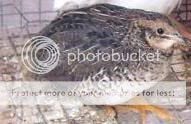
^Hen<--- My hen Kitty
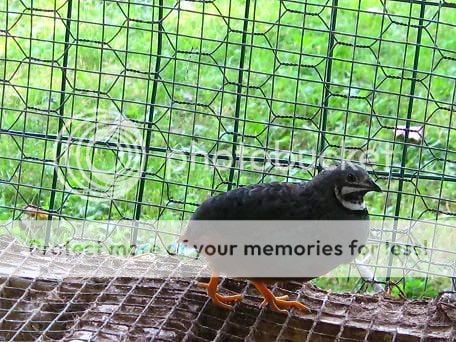
^Male- some people confuse the wild male as a blue faced because of the gorgeous blue- the well defined bib is a dead-give-away that this is nothing more than a wild male- a blue faced is pretty but the irridesence in the wild male is much more flashy than the dull dark blue on blue faces- some blue faced males are almost black. This was my male wild.
Cindy (lilralphieroosmama) donated this picture of her favorite wild boy (who if im not mistaken is daddy to my Kpax- which means he carries silver he he):
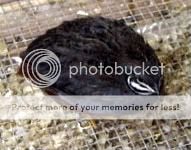
Cindys website for hatching eggs and chicks (buttons, coturnix and chickens- as well as candles- (i can't wait to get my own from her) IS::: CLICK HERE
S = Silver - Recessive dilute
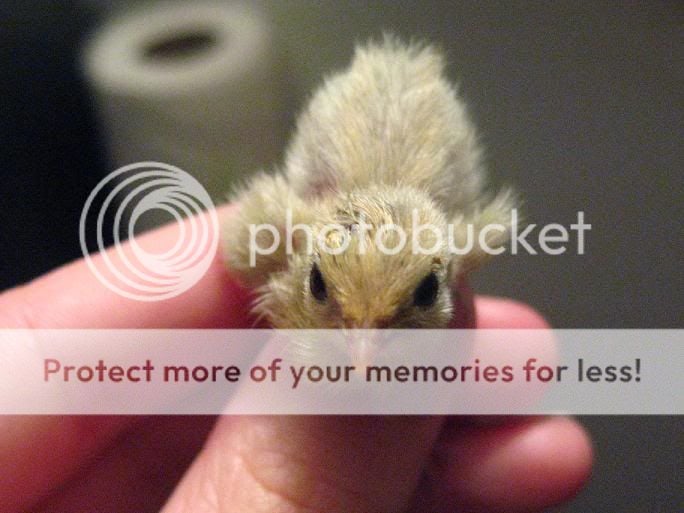
^Chick- Kpax as a chick- need more pictures of fluffy silver chicks
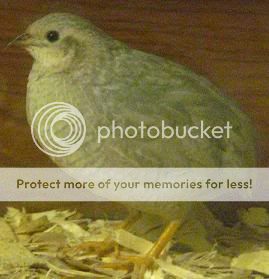
^Male- my silver male Kpax- some males have no bib, if you look closely you can see he has a very very light bib
^ Female- needed

C = Cinnamon - Recessive causing reduction of black pigment
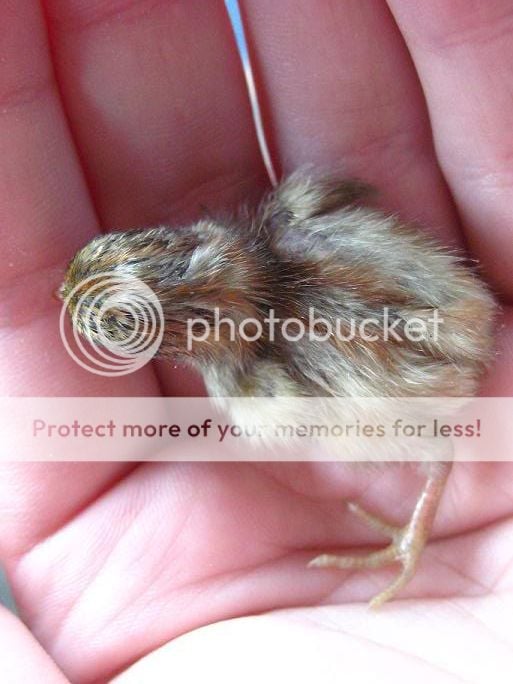
^ Chick (looking for other owners with more examples of cinnamon as cinnamon chicks all look different but simliar in some ways so please PM me if you have some)!

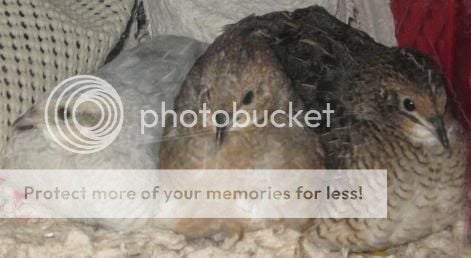
^Cinnamon Hen in middle- Will get a better picture of her soon-theres two types of cinnamon hens i've seen, my type with spots that make them almost look like splashes, and the other type are a more uniform cinnamon, I am working on getting one of those asap.

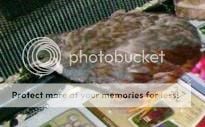
^Male- this boy is from a breeder on another group I'm on, he looks almost like a wild, however the cinnamon splots all over his back are a dead giveaway.

W = White - Recessive - Capable of masking all colors
All white bird, chicks are yellow- they are extreemly hard to sex off of just looking at them however some have said that males can have some red tinting to their breasts, however a nicely feathered bird will be pure white no matter the sex, males tend to be smaller in any color so that's a good way to inspect, males also have smaller vents and pelvic areas and crow (darth vadar call, a growl then a high pitched "PEW! PEW! PEW! PEW!").
Cindy (lilralphieroosmama) *website: CLICK HERE (she almost always has some cuties for sale hatching eggs as well!* Donated this picture to me of one of her whites unsure at this time male or female however it doesnt really matter haha.
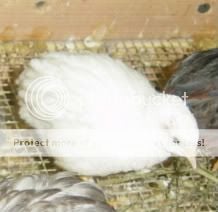
Would like chick, male and hen pictures plz

Sh = Splash - White base color with colored patches
Splashs are very hard to sex as well, its a white bird with patches of color (any other color really).
Need chick, male and hen plz.
B = Blue Faced - Dominant - Single factor (B), Double factor (BB)
Blue faced chick is pureblack, to black with a white throat depending on it's genetics.
Double Factor:
Shelley if you have it, I need a fluffy chick picture of your boy for DF (which I now know is BB genetically).
^Chick
Shelley- any chance newbie picture of your male to share?

^ Male
someone on here has a Double Factor hen i forget who but if' you'd like to share please pm me!

^
Hen
Single Factor:
^Chick
^Male
^Hen
*all needed*
P = Golden Pearl - Dominant - Color and pattern variant
^Male:
<---Looks like a wild, but very dull coloring
^Female:
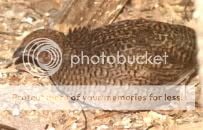
Golden Pearl is a highly sought after color- not by me but several serious breeders.
R = Red Breasted - Recessive - Color and pattern variant
Pd = Pied - A colored bird having white flight feathers
Comes in ANY Color so share and share away (pictures that is lol):
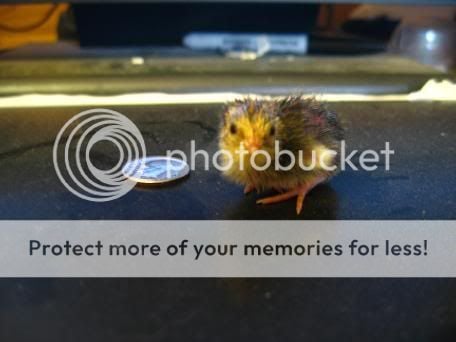
^
Chick- white wing tips
^
Male
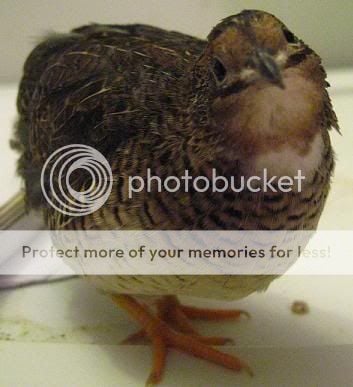
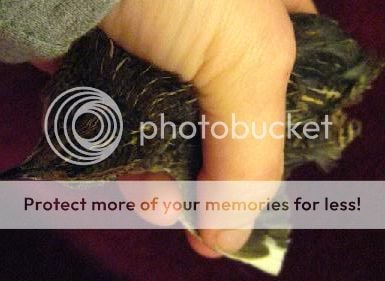
^
Hen<---my girl "Pippin" (a wild pied) has white under her throat, I asked some breeders about this and they said that first generation pieds seem to sometimes express white here as well. Others have said this means she's dominant for pied...I guess we'll see when she finnally starts laying fertile eggs. Second picture shows her white wing feathers, I clip wings for safety so theres not much to see ha ha.
Ca = Caramel - Presently only identified in Australia<--never seen this!

Pe = Pink Eyed Dilute - Still in development, extremely rare<--I know a few people who have this color on another group I'll ask them to share their pictures.

I = Ivory - Cinnamon + Silver combination<--only heard of never seen
Sl = Slate - Silver + Blue Faced combination
Sm = Smoky - Cinnamon + Silver (Ivory) + Blue Faced combination
Dv = Darth Vader - Selection of red breasted with extreme expression<---very pretty birds
Cu = Curly - Feather structure variant causing curled feathers<---don't confuse this with buttons that are defficiant of something. These are birds genetically born curled as opposed to getting that way from malnutrition.
Will be putting more info together, as far as incubation, feeding, breeding methods etc. Slowly but surely. Seems a lot of people are interested in them more so lately, but I want to do one thing at a time so it's color pictures first.

Still focusing right now only on color pictures and enclosures, however I thought I'd copy and paste the info I have on them from my website on to here for now and I'm sure i'll edit and add to it.

BUTTON QUAIL INFO AND CARE
Oh boy oh boy are Button Quails so much fun! Especially if you're facinated by genetics, OR just enjoy watching the antics of adorable little fluff butts that are the Button Quails AKA Chinese Painted Quail.
Button Quails are what I like to call "look at pets" they make wonderful pets, however only within the most respectable of owners "hands". I say that because these birds do not perfer to be held, and are in most cases utterly terrified by being held or handled (in most cases). As young hatched chicks they can be very fun, following your hand, hopping in your fingers for some chick crumbles to even calling for you if you leave thier brooder. However, in my experience, once they are almost a week old, they start getting a fear towards anything that isn't a button quail. I however, have a hen "Pippin" who adores me (she's the wild pied hen picture above) she started fearing me after a week of age, but once she got to adult age and started laying eggs she I guess decided I was her mate. She calls to me if I leave the bedroom, and sits on my lap and chatters away to me, if I walk away she eventually works her way to me. I'd have her out all the time if I didn't have cats ha ha! They are pretty much like owning a finch or canary though, a bird you look at/watch and enjoy without envolving yourself too much within their home for the most part. If you're lucky to get a buddy out of one, feel blessed.

I have my chicks that are in a 10 gallon brooder here on my computer desk, so they get used to me being within inches from them, this helps adjust them to being watched by amused eyes.
I suggest if you own button quail to start them off early in a part of your home that gets medium activity through it throughout the day that way they become adjusted to your routines early on. I am at my computer various times throughout the day, so having the chicks on the computer desk with me is perfect.
Button Quails make various noises, but they are anything but loud. They make very soft peeping sounds (kind of like a baby chicken would make, however on a quieter scale) they also call out "wee wee woo!" (also sounds like "i love you!" or "where are you!?") which if you learn their call and whistle it back most quails will after a few moments respond back with their own "wee wee woo!" It is really adorable and puts smiles on the faces of people who hear it for the first time. They also make a "growl" which I believe is the male button quails way of threatening other male button quail to stay away from HIS girlfriends. The male crow starts with a growl then a "PEW! PEW! PEW!" it is called the "Darth Vadar Call" which if you've seen Star Wars, theres many noises on there that Do sound like button males crow! ha ha! *the guns shooting*, and I guess you could say their growl sounds like Darth Vadar breathing?? LOL
Button Quail in my experience don't peck or even scratch but they do try to flee the hand that handles it so I handle them as little as possible to keep their stress levels low. You wouldn't snatch out a finch every day and mess with it would you? Think of it that way.

They are very cheap to care for and as you would suspect eat very little feed daily..however it's best to always make sure they have ample feed and water. A game bird mix of crumbles, ground up cat kibble, and occational boiled egg, and millet bird seed, grit, oystershell, and water will keep your quail in tip top shape. Chicks should be supplimented with ground up kitten kibble, it helps with growth. A breeder I know of has been breeding her buttons for 30 years and has fed them ground up kitten kibble everday to her chicks with great results. No stunted growth problems this way. Adults can be supplimented with ground up CAT food, however only once a week, and only a teaspoon sized amount because they can't handle all the fat. Birds in colder climates can recieve more than that to help keep them warm but be careful with the amounts on the adults they don't process it like the chicks do, adults have less needs for it. It's better to just offer the adults mealworms, crickets or something similar that's high in protien than cat food. Boiled eggs once a week for chicks and adults mashed up ofcourse is great!
Their bedding can be normal aspen or pine bedding (as long as the cage they're in is deciently allowed supplied with fresh air to keep dust down), or even sand (which your quail can and will happily eat some of- to help them digest their food properly). Button quail can also be housed on a full wire cage to keep them clean, though most indoor button quail owners like the solid floor route...I raise my quail on both wire and solid floors depending where they are and what age they are.
For an adult pair of button quail, a ten gallon tank with a lid would make a perfect home, however as most will tell you about any animals care "bigger is better".
Button Quails are full ground dwelling birds, they do not and cannot perch, so no need for perches or high cages. However Button Quails when spooked or playing shoot straight up like a rocket and can bonk their heads on the roof of their enclosure, the best thing to ensure your button quails dont hurt their heads (yes some can even die from hitting their heads hard) is craft foam, atleast a half an inch thick...just glue it to the top of your aquariums roof and wala you have padded ceiling for your wee ones.


BUTTON QUAIL Factoids
Button Quails are purchased as pets, breeders, and for ground aviary clean up! Yep that's right you can put button quails on your aviary floor to clean up your other exotic birds seed messes!

Button Quail hens start laying eggs from 6 week old until they die DAILY, as long as they are kept under good lighting, kept out of drafts, and are fed a decient diet. An egg a day....with or without a male that's a lot of eggies believe me!

Hens can hatch thier own eggs but because hens can get so nervous easily, most just incubate them instead of hoping the hen can do it. Chicks hatched by thier mothers, have better chances at brooding thier own future brood. If you want to try this out, go ahead, the hen will lay an egg a day,a nd if she's broodie once she gets about 6-10 eggs she'll normally start incubating them. Hidey places are normally critical for making a hen feel safe during this time.
Quail eggs can be incubated for hatching your own chicks, or even used as a fancy small egg for eating! yes that's right, those tiny sushi eggs, are none other than quail eggs so why not!

Quail eggs are about the size of a dime, even though they are so small when compaired to the hen that layed it they are HUGE!

ANY contributions you guys want to add please PM me and I will credit your info and pictures. I'm interested in peoples enclosure set up as well right now so if you have pictures and measurements please send em to me I'll be happy to add them.
Last edited:


